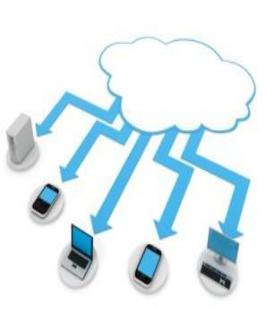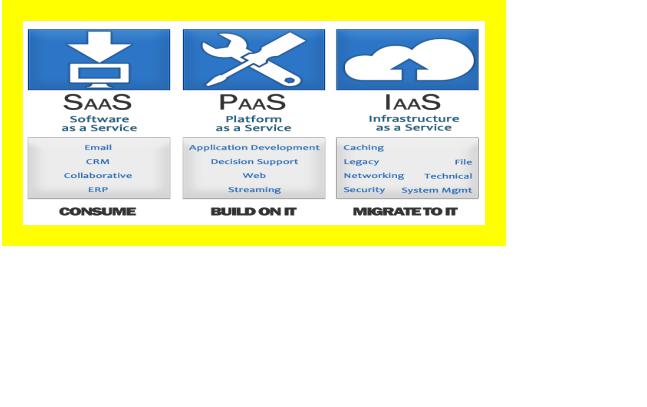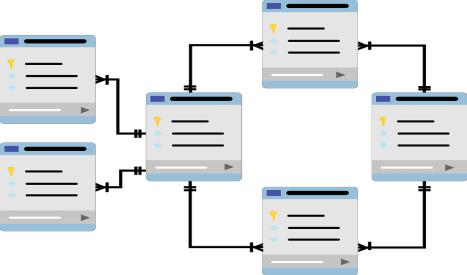
9500
.pdfReading
Read the computer magazine article and find more information in favor or against these companies’ products.
MACS® AND PCS
As Apple® grows in popularity, the Mac® versus PC debate continues. Many businesses experience trouble choosing between the two. However, businesses must realize that each computer is suited for different needs.
The two differ most in their operating systems. With PC you have a variety of
OS options from Microsoft® and other sources. Macs® come with one of the proprietary Apple® OSes like OS X®. You can install Windows® on a Mac®, but many users prefer the Mac® OS regardless.
Macs® have proven themselves vital in publishing, particularly the prepress process. Mac® has superior typography and color matching. Once printed, products look exactly as good as they do on the computer screen.
Meanwhile, PCs are noted for their fast processing speed and adaptability. Users can customize a PC to their needs. Additionally, their video subsystems are more powerful. This makes PCs desirable for game designers and others who need advanced graphics.
However, both computers have their limitations. While PCs are cheaper, they are also more susceptible to viruses. Macs® usually cost more but are less susceptible to computer viruses. However, Macs® tend to have fewer third-party software options than PCs. Businesses need to consider such concerns and make the right decisions when buying computers for their companies.
Vocabulary focus:
1. Match the words with the definition.
1. |
Apple® |
a) |
company that creates the most com- |
|
|
|
mon PC operating system |
|
|
|
|
2. |
Windows® |
b) |
part of the computer that creates vis- |
|
|
|
uals |
|
|
|
|
3. |
customize |
c) |
system that is likely to be harmed by |
|
|
|
a virus |
|
|
|
|
4. |
OS X® |
d) |
operating system for PCs |
|
|
|
|
5. |
processing speed |
e) |
changing a computer for yourneeds |
|
|
|
|
6. |
video subsystem |
f) |
company that creates Macs® |
|
|
|
|
7. |
Microsoft® |
g) |
operating system for Macs® |
|
|
|
|
8. |
susceptible system |
h) |
a measurement of how quickly a |
|
|
|
computer works |
|
|
|
|
2.Fill in the blanks with the correct words: prepress, color matching, PC, topography
1.A ……….. comes with OS X®.
2.Publishing software is needed for the ………… process.
3.Good ……….. means anything printed out looks like what’s on screen.
4.I’m getting a ………… because I like the Windows® OS.
5.The ……….. on his computer includes hundreds of fonts.
Work with the Internet
Surf the net and find additional arguments in favor of each company.
www.computerhope.com http://www.computerworld.com/article/2507485/vertical-it/apple-vs--microsoft-by- the-numbers.html http://americasmarkets.usatoday.com/2014/07/23/apple-vs-microsoft-by-the- numbers/
Group work:

Make two groups. One group will present the interest of MICROSOFT Company another group will represent APPLE Corporation. Collect arguments in favor of each company and be ready for the cross discussion.
9. CLOUD TECHNOLOGY
Leadin
What is cloud computing?
How can cloud technology help people?
What are the benefits of this online service?
What are the downsides of this technology?
Do you use this technology?
Do you like it? Why?
Fill in the cluster with the most important cloud technology services.
Reading
Read the computer magazine article and add more information to the cluster.
Answer the questions:
1.What are the benefits of the cloud technology for businesses?
2.What are the differences between the conventional and the cloud IT services?

What is Cloud Computing and why does your small business need it?
Cloud computingis a way to increase capabilities on the fly without investing in a new infrastructure, training new personnel, or licensing new software.
Small businesses benefit from Cloud computing by not having to deploy physical infrastructure like file and e-mail servers, storage systems or shrink-wrapped software.
Cloud computing is a broad umbrella that includesSoftware-as-a-Servicewhere a specific application or service is offered to a customer as a subscription. Dropbox,Salesforce.com, andQuickBooks are all examples ofSaaS.
SaaS provides a way of delivering a host of software and technical services that would usually be cost-prohibitive and difficult to manage as on-premise, local solutions.
Cloud computing has come a long way and is now mainstream technology for businesses.
The cloud does for IT asUPSandFederal Expressdid for the shipping industry. Cloud computing capabilities deliver a plethora of network technology.
Small businesses are most likely to not have an IT staff or technical, inhouseexpert. Some companies don’t even know how to ask about their company’s tech infrastructure.
Joining the cloud can help reduce these stress of all theIT stuff.
In The Cloud
The different types of models of cloud are:public,private,communityandhybrid.
Public cloudis available to the general public over the Internet. It’s a “game changer” for small businesses andgives them access to enterprise-level applications.
Private cloud is within a corporate firewall. It is reserved for largercompanies that have their own IT staffand data centers.
Community cloudis shared between different organizations. It’s a multitenant infrastructure with a pay-as-you-go billing structure.
Hybrid cloud is a combination
of the three. This cloud addresses configuration management, change control, security and budgeting.
SaaS (Software as a Service)is predominantly used for office productivity like email, work processing, number crunching, and online file sharing.

IaaS (Infrastructure as a Service)functions like storage and computing. It is used to store intellectual property like documents, drawings, applications and code proprietary to a business.
PaaS (Platform as a Service)is used to develop and run a website in the cloud or build applications.
There is a huge opportunity for growth of a small business when using cloud services.
Cloud computing encompasses subscription-based or pay-per-use service, that in real time or over the Internet, extends IT’s existing capabilities.
Cloud computing is still at an early stage, with a crew of providers large and small. It delivers not only cloud-based services from storage to spam filtering but presents a utility-style infrastructure for your business.
Vocabulary focus:
1.Match the words from two columns to create a phrase and use the phrase in the sentence of your own to speak about cloud technology.
increase |
host |
benefit |
of network technology |
deploy |
capability |
offer |
from cloud computing |
deliver |
technology |
mainstream |
pay-per-use service |
encompass |
as a subscription |
plethora |
infrastructure |
2. Fill in the blanks with the correct word:
storage, SaaS, applications, IaaS, spam filtering, PaaS, subscription
-Cloud technology delivers cloud-based ……….…. and ….…..…. services.
-Public cloud gives businesses access to enterprise-level ………………. .
-…………….. functions like storage and computing.
-…………….. is used to develop and run a website in the cloud or build applications.
-…………….. is used for office productivity like email, work processing, number crunching, and online file sharing.
-Cloud computing provides ……………… based service.
Work with the Internet
Surf the net and find information about the advantages and disadvantages of cloud technology.
http://www.claconnect.com/Risk-Management/The-Benefits-and-Risks-of-Cloud- Computing.aspx http://www.business.qld.gov.au/business/running/technology-for-business/cloud- computing-business/cloud-computing-benefits http://www.moorestephens.com/cloud_computing_benefits_challenges.aspx http://mobiledevices.about.com/od/additionalresources/a/Cloud-Computing-Is-It- Really-All-That-Beneficial.htm
Group work:
Make two groups. One group will be in favor of cloud technology another group will be against it. Collect your arguments and be ready for the cross discussion.

10. DATABASES AND DATABASE MANAGEMENT SYSTEMS
Lead in
1. Answer the following questions
-What is a database?
-What kind of information can you find in databases?
-What is the purpose of database management system?
-What examples of database management systems do you know?
-What are their differences?
bases and database technology have a major impact on the growing use of computers. It is fair to say that databases play a critical role in almost all areas where computers are used, including business, electronic commerce, engineering, medicine, genetics, law, education, and library science.
A database is a collection of related data. By data, we mean facts that can be recorded and that have implicit meaning. For example, consider the names, telephone numbers, and addresses of the people you know. You may have recorded this data in an indexed address book or you may have stored it on a hard drive, using a personal computer and software such as Microsoft Access or Excel. This collection of related data with an implicit meaning is a database.
A database has the following implicit properties:
-A database represents some aspect of the real world, sometimes called the miniworld or the universe of discourse (UoD). Changes to the miniworld are reflected in the database.
-A database is a logically coherent collection of data with some inherent meaning. A random assortment of data cannot correctly be referred to as a database.
-A database is designed, built, and populated with data for a specific purpose. It has an intended group of users and some preconceived applications in which these users are interested.
In other words, a database has some source from which data is derived, some degree of interaction with events in the real world, and an audience that is actively interested in its contents. The end users of a database may perform business transactions (for example, a customer buys a camera) or events may happen (for example, an
employee has a baby) that cause the information in the database to change. In order for a database to be accurate and reliable at all times, it must be a true reflection of the miniworld that it represents; therefore, changes must be reflected in the database as soon as possible.
A database can be of any size and complexity. For example, the list of names and addresses referred to earlier may consist of only a few hundred records, each with a simple structure. On the other hand, the computerized catalog of a large library may contain half a million entries organized under different categories – by primary author’s last name, by subject, by book title – with each category organized alphabetically. A database of even greater size and complexity is maintained by the Internal Revenue Service (IRS) to monitor tax forms filed by U.S. taxpayers. This huge amount of information must be organized and managed so that users can search for, retrieve, and update the data as needed.
A database may be generated and maintained manually or it may be computerized. For example, a library card catalog is a database that may be created and maintained manually. A computerized database may be created and maintained either by a group of application programs written specifically for that task or by a database management system.
A database management system (DBMS) is a collection of programs that enables users to create and maintain a database. The DBMS is a general-purpose software system that facilitates the processes of defining, constructing, manipulating, and sharing databases among various users and applications. Defining a database involves specifying the data types, structures, and constraints of the data to be stored in the database.
An application program accesses the database by sending queries or requests for data to the DBMS. A query typically causes some data to be retrieved; a transaction may cause some data to be read and some data to be written into the database.
Other important functions provided by the DBMS include protecting the database and maintaining it over a long period of time. Protection includes system protection against hardware or software malfunction (or crashes) and security protection against unauthorized or malicious access. A typical large database may have a life cycle of many years, so the DBMS must be able to maintain the database system by allowing the system to evolve as requirements change over time.
It is not absolutely necessary to use general-purpose DBMS software to implement a computerized database. We could write our own set of programs to create and maintain the database. In either case – whether we use a general-purpose DBMS or not – we usually have to deploy a considerable amount of complex software. In fact, most DBMSs are very complex software systems.
WHAT TO LOOK FOR IN A DATABASE?
Although database management systems all perform the same basic task, which is to enable users to create, edit and access information in databases, how they accomplish this can vary. Additionally, the features, functionality, and support associated with each management system can differ significantly.
When comparing different popular databases, you should consider how userfriendly and scalable each DBMS is as well as how well it will integrate with other products you’re using. Additionally, you may want to take into account the cost of the management system and the support available for it.
Database management engines also need to be able to grow with your organization. Small businesses may only need limited features or have small amounts of data to manage, but requirements can grow substantially over time, and switching to another database management system can be a hassle.
There are a number of popular databases systems available – both paid and free. To help you decide which management system might be right for you or your organization, check out the list below of the most popular databases.
2. Complete the table with the most popular databases systems available. Match the specific feature to the databases system it characterizes.
|
m) It is one of the most popular databases for web-based |
||
Oracle |
applications. It’s free, and it is frequently updated with fea- |
||
tures and security improvements. |
|||
|
|||
|
n) |
It is ideal for large organizations that handle enormous |
|
MySQL |
databases and need a variety of features. |
||
|
|||
|
o) |
It is ideal for organizations that need a robust database |
|
Microsoft |
management tool but are on a budget. |
||
SQL Server |
p) |
It is available on Linux as well as Windows-based plat- |
|
|
|||
|
forms. |
||
PostgreSQL |
q) |
PostgreSQL is one of several free popular databases, and |
|
|
|||
|
it is frequently used for web databases. |
||
|
r) |
You are able to access visualizations on mobile devices. |
|
|
s) |
It is ideal for organizations with a limited budget that |
|
|
want the ability to select their interface and use JSON. |
||
|
t) |
It works very well with other Microsoft products. |
|
|
u) |
The first version of this database management tool was |
|
|
created in the late 70s. |
||
|
|
|
|
